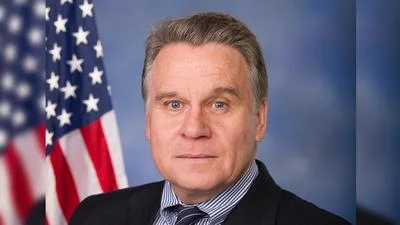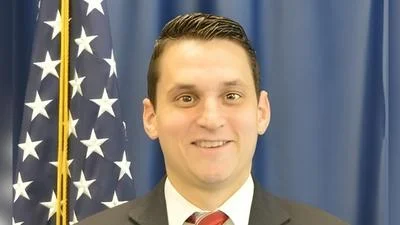The Congressional Record is a unique source of public documentation. It started in 1873, documenting nearly all the major and minor policies being discussed and debated.
“INTERIM STORAGE OF RADIOACTIVE WASTE” mentioning the U.S. Dept. of Energy was published in the Senate section on pages S1354-S1355 on Feb. 13, 1997.
The publication is reproduced in full below:
INTERIM STORAGE OF RADIOACTIVE WASTE
Mr. MURKOWSKI. Mr. President, a very serious situation exists in our Nation that I would like to discuss with my colleagues today. It concerns the storage of nuclear waste that has been generated in conjunction with the operation of nuclear reactors that provide this Nation with about 22 percent of the power generation that we currently enjoy. Without this contribution from the nuclear industry, we would have to depend on some other form of generation to contribute that 22 percent. We would probably use more coal, perhaps more natural gas. The potential for developing more hydro is somewhat limited, based on the costs and the fact that most of the potential hydro sites have already been developed. I happen to be chairman of the Energy and Natural Resources Committee, which has the obligation to oversee our country's electricity industry. It is an industry that most Americans take for granted. We are used to plugging in the iron, plugging in the coffee pot, and having them work. We do not recognize and we do not really reflect on what is behind it--the people, the men and women working in the power generating business, the business of transmitting the electric energy, distributing it and making sure it works.
In any event, in connection with the tremendous dependence we have on nuclear energy in this country--I might add, we are the largest consumers of nuclear generated energy of any nation in the world--I was staggered to read that the Senate-White House meeting which was held yesterday resulted in agreement on some issues, but no agreement to address the question of what to do with the nuclear waste generated by our power reactors.
I think a headline should have read, ``The Clinton Administration Simply Wants to Keep the Status Quo.'' Keeping nuclear waste in the neighborhoods of our country, and the consequences of that, deserve some examination. This examination could start in your town, in your State, in your neighborhood. That is where it is being stored. High-
level radioactive materials are piling up in 80 locations in 41 of our States. Onsite storage is filling up, and the States which control the ability of utilities to store nuclear waste on the reactor sites will have to address whether they want to increase onsite storage at the nuclear reactors, or whether they will give in to pressure to simply not allow any further storage beyond the limited amount of existing storage.
Some see this as a way to shut down the nuclear industry in this country. By objecting to any increase in authority to store onsite, the reactors can be forced to shut down because there is no place to put the spent fuel.
I have a chart which I am going to spend a few minutes on, because it shows the crucial nature of the problem. When the administration says,
``We will just leave it where it is,'' I suggest to you, Mr. President, that this is an unrealistic and unworkable alternative. By 1998, 23 reactors in 14 States will run out of storage space. What we have here are plants with adequate storage, and they are indicated in the light blue. You can see most of them are on the eastern seaboard. But in purple are plants requiring additional storage by the year 2010. These States all have plants in purple: California, Arizona, Florida, Georgia, North and South Carolina, and all up and down the east coast. These plants do not have adequate storage to hold waste within the areas immediately adjacent to the reactors, and are going to have to petition the States to increase the authorization for nuclear energy waste allowed to be stored at those sites. In the green are plants requiring additional storage by the year 2015. They are primarily on the eastern seaboard and the Midwestern States, such as Illinois.
So the point of this chart is to highlight that additional nuclear waste storage is needed in this country now. The bill we have introduced in our committee, S. 104, would provide a real solution to this crisis that is coming down the track. It is a train wreck that is coming. We have this material at 80 locations in 41 States. The Federal Government entered into a contractual commitment with America's ratepayers who depend on nuclear energy and the nuclear generation industry. In return for over $12 billion ratepayer dollars, the Government committed to take this waste by the year 1998. This is less than 1 year away; it is about 10 months away. The Federal Government has no place to put this waste and will default on its contractual commitment in 1998, when it is obligated to take the waste.
There has been an effort to provide this Nation with a permanent repository. The government has a study program under way at Yucca Mountain, NV. We have spent $6 billion on this effort, but that facility will not be ready for 15 years, at the earliest. Secretary O'Leary said it may be 20 years. It may be longer. But the point is, we are looking at somewhere in the area of 2015 or thereabouts, and where in the world are we going to be able to accommodate this waste? Because we are not going to have a permanent repository then. We may never have a permanent repository, and I will talk about that a little later.
S. 104 is a bill that got 63 votes in this body last year. The bill would provide for construction of a temporary storage facility, either at the Nevada test site or another site chosen by the President and Congress, until such time as we have a permanent repository constructed.
Why the Nevada test site? The geologists tell us it is the best site that has been identified for a permanent repository. Furthermore, it is a site where for over 50 years we have tested our nuclear weapons. It is a site that is monitored and secured. It is a site that is well known. And it is the most appropriate site that has been identified.
Now, the bottom line with this whole issue, Mr. President, is nobody wants nuclear waste. But you cannot throw it up in the air. It will come down somewhere. So the question is, what do you do with it? Again, last year, 63 Members of this body indicated that they approved of the construction of a temporary repository at the Nevada test site because it would allow us to proceed with the permanent repository, and when the permanent repository was done and certified and licensed, the waste could go in there.
The point is, next year the Government has to take the waste or face liability and the damages associated with the failure to meet its obligation. Mr. President, this is the most important environmental bill before this Congress.
This administration has said, ``Leave it where it is.'' When this issue was brought up at Tuesday's meeting, it is my understanding the Vice President said, ``Look, we're going to talk about the things we can agree on. We can't agree on the issue of nuclear waste.'' Whether that is a fair characterization, I can only depend on the news reports. But the administration's position seems to be to leave the nuclear waste where it is until we have a permanent place to put it.
Let me tell you a little bit about the possibility of a permanent repository at Yucca Mountain. We do not know whether Yucca Mountain may ever be ready. We have spent $6 billion already. It is estimated that it will cost a total of $30 billion by the time we are through with it. The Department of Energy says it has a 50-50 chance of actually being licensed.
The theory here is that the scientists have to go through this process to determine whether Yucca can contain nuclear waste for thousands of years.
Mr. President, if I may have another 6 or 7 minutes, I would appreciate it, and I ask unanimous consent.
The PRESIDING OFFICER. Without objection, it is so ordered.
Mr. MURKOWSKI. I thank the Chair.
Mr. President, the difficulty we have here with Yucca Mountain is not knowing whether we will ever get it licensed because it has to withstand a scientific analysis regarding any possible source of exposure--earthquake, volcanic activity, any leeching into the ground--
for approximately 10,000 years. We do not know whether science can come up with that kind of certification.
But, in any event, in order to try to make this case we have to proceed with the tunneling, and spend the money. However, we simply do not know whether it will ever be a permanent repository. But the idea of moving this waste from 41 States, 80 sites, to a place where we have had extensively studied certainly seems to make sense. If Yucca Mountain is determined to be permanent, we will have the waste there and ready to put in a permanent repository. If Yucca Mountain is not the permanent repository site, it will be dozens of years before another permanent repository site can be located and studied, and a central interim storage facility will still be needed.
It is my understanding that the Vice President apparently was saying two things. The administration no longer supports any form of centralized interim storage. In the meantime, we can only conclude that their policy is, ``Leave it where it is.'' Leave it where it is. Ignore the problem. Put off the decision. Act like an ostrich--put your head in the sand. Let nuclear waste build up in 41 States, near the homes, near the schools. This is the administration's irresponsible and dangerous policy on nuclear waste storage.
As I said, the Federal Government has a 1998 deadline. Taxpayers have paid billions of dollars only to have the Vice President say, ``Leave it where it is.''
I have another chart that I will refer to very briefly. These are the States where ratepayers have paid into the Federal Government's nuclear waste fund to provide for nuclear waste storage. The Federal Government did not hold this money in escrow. They put it in the general fund. They have spent it.
The point is, there is $12 billion that has been paid in by the ratepayers for the Federal Government to take this waste in 1998. Virtually every State has bought nuclear power and paid into the fund. That is where the Government's contractual commitments really lay.
Why is the administration simply saying no to any form of interim storage when Yucca Mountain has only a 50-50 chance of opening? Some who are on the fringes of the environmental movement think that this sort of foot dragging may help them close down the entire nuclear industry. Those people apparently have no responsibility for replacing that 22 percent of our power that we will lose. Twenty-two percent of our electricity, Mr. President, is generated by nuclear power. Even if all of the reactors shut down, we would be stuck with the utility waste and the defense waste still. We would not have an answer for what to do with it. If they shut down the industry, we still have the waste to dispose of.
Mr. President, we won the cold war with the help of our nuclear deterrent. Now we have an obligation to clean up the mess. We can win the war on nuclear waste. Leaving it where it is is not an option, and 41 States are watching us.
In addition to the nuclear waste of our power generators, we have nuclear waste that resulted from nuclear weapons development. I was at Hanford 2 weeks ago and went through the old plants that developed the plutonium to make the Hiroshima bomb, and those that made advanced nuclear devices. One must seriously consider what those facilities contributed to humanity and the burden they left. It is a responsibility that we must bear. Nuclear weapons brought the Second World War to an early close. There were lives lost; there were lives saved. The same thing is true regarding the collapse of the Soviet Union.
No matter what your opinion regarding these matters, we have a legacy of nuclear waste. We have to address it. The responsible way to address it is to meet head on the obligations we have made. Under a contractual commitment, we have collected $12 billion from ratepayers and are committed to take that waste by 1998.
The Government is not prepared to take the waste. This case is going to be litigated, and it will become a full employment act for the lawyers beginning in 1998. We have proposed in S. 104 to address it now by providing for the siting of an interim storage site, in the Nevada desert, or somewhere else the President and Congress may choose, until we have a permanent repository.
Mr. President, we have to have a temporary central storage facility in this country. There is absolutely no question about it. But this administration chooses to ignore it. They want this problem to go away. They do not want to address it on their watch. I suggest, Mr. President, that this is irresponsible. I thank the President and wish him a good day and yield the floor.
Mr. GRAMS addressed the Chair.
The PRESIDING OFFICER. The Senator from Minnesota is recognized to speak for up to 20 minutes.
Mr. GRAMS. Thank you very much, Mr. President. I appreciate that.
(The remarks of Mr. Grams, Mr. Kohl, and Mr. Feingold pertaining to the introduction of S. 322 are located in today's Record under
``Statements on Introduced Bills and Joint Resolutions.'')
Mr. SHELBY addressed the Chair.
The PRESIDING OFFICER. The Chair recognizes the Senator from Alabama.
(The remarks of Mr. Shelby pertaining to the introduction of S. 323 are located in today's Record under ``Statements on Introduced Bills and Joint Resolutions.'')
Mr. COATS addressed the Chair.
The PRESIDING OFFICER. The Senator from Indiana [Mr. Coats] is recognized to speak for up to 10 minutes.
____________________








